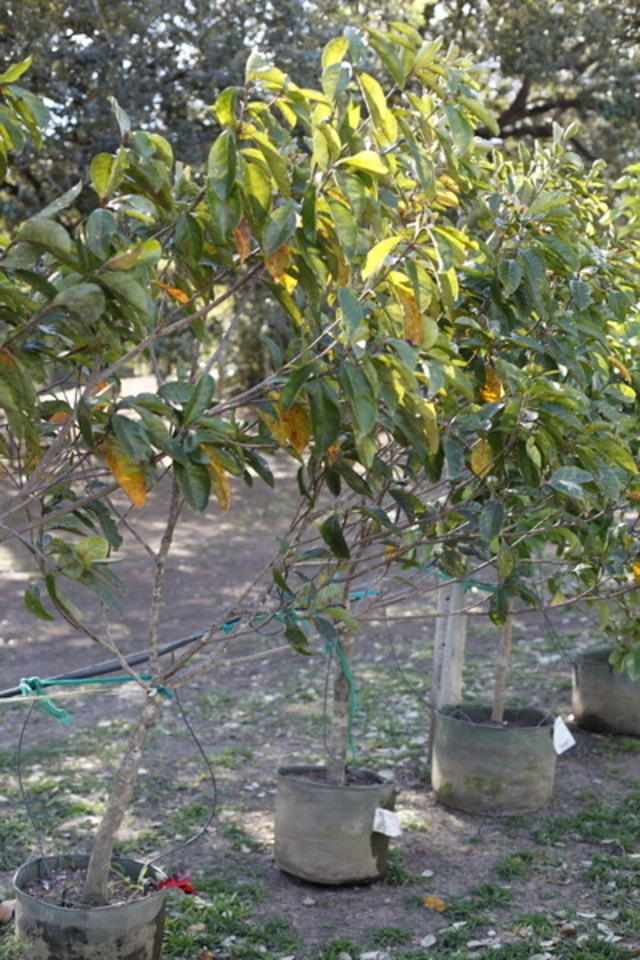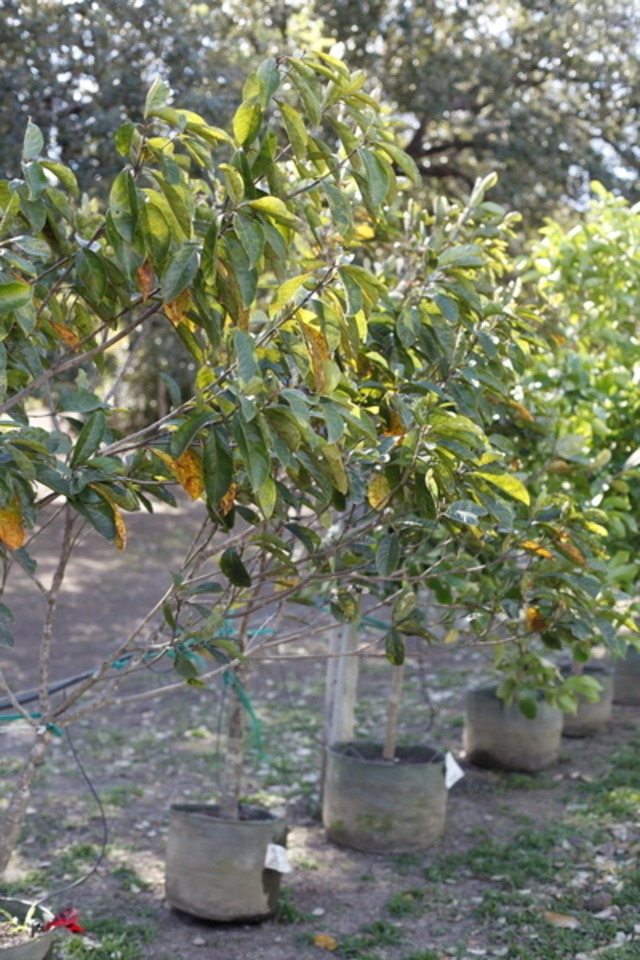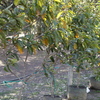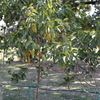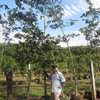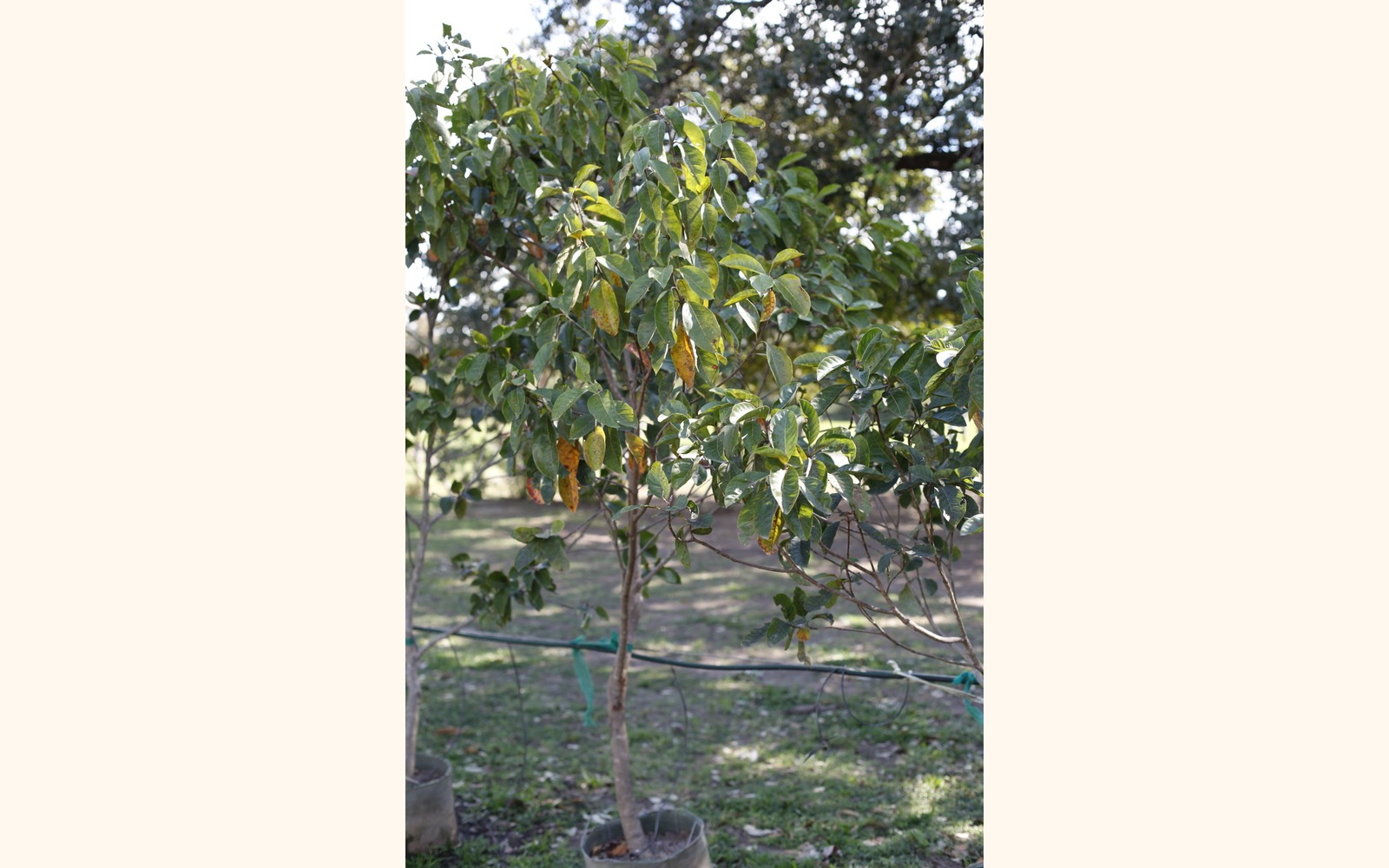
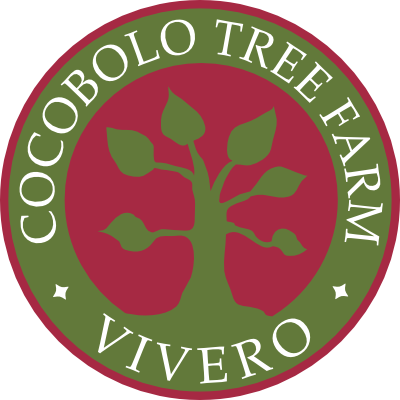
Plants > Ornamental & Shade Trees > Nance
Nance, Golden spoon
Byrsonima crassifolia is a slow growing large shrub or tree that is native to tropical America. It is valued and therefore sometimes cultivated for its small, sweet, yellow fruit, which are strongly scented. We love the the shape of the tree, the trunk texture, and the flowers and fruit. We have several mature wild ones on our finca that bring us, the birds, and squirrels,(and who knows what other creatures) great delight!
Plant Characteristics
Leaves
Opposite leaves, ovate to elliptic or oblong-elliptic, may be 1 1/4 to 6 1/2 in (3.2-17 cm) long and 1 1/2 to 2 3/4 in (4-7 cm) wide, rounded or pointed at the apex, blunt or pointed at the base; leathery, usually glossy on the upper surface and more o
Fruit
April through August
The fruit is peculiarly odorous, orange-yellow, round, 5/16 to 7/16 in (8-12 cm) wide, with thin skin and white, juicy, oily pulp varying in flavor from insipid to sweet, acid, or cheese-like. There is a single, fairly&
Flowers
The flowers, borne in thinly or conspicuously red-hairy, erect racemes 4 to 8 in (10-20 cm) long, are 1/2 to 3/4 in (1.25-2 cm) wide; the 5 petals yellow at first, changing to dull orange-red.
Bloom Cycle
generally March - June but has been seen to bloom January through September
Additional Information
Benefits | Desirability
Nance fruit is eaten raw used in making carbonated drinks, desserts, soup. stuffing for meats, candy and also a rum like liquor ,called in Costa Rica crema de nance.
Other Uses:
Wood: The sapwood is grayish; the heartwood reddish-brown, heavy, coarse-textured, tough, and highly prized for boat ribs though it is brittle and only medium-durable. Usually available only in small sizes, it serves for tool handles, turnery, cabinetwork and furniture and small-scale construction. In Brazil, the wood is chosen for the hot fire over which the people smoke the stimulant paste of guaraná (Paullinia cupana HBK.) because the burning wood has a pleasant odor. In some areas it is used for making charcoal.
Fruit: Green fruits are sometimes used in dyeing. The fruit skin imparts a light-brown hue to cotton cloth.
Bark: The bark yields a strong fiber, and is employed in tanning, giving the leather a light-yellow tone. The bark contains 17.25-28.26% tannin and 2.73% oxalic acid.
Branches: Fresh branches are cut into small pieces and thrown into streams to stupefy fish; or they are crushed at the edge of shallow waters so that the juice spills into the water, for the same effect.
Wood: The sapwood is grayish; the heartwood reddish-brown, heavy, coarse-textured, tough, and highly prized for boat ribs though it is brittle and only medium-durable. Usually available only in small sizes, it serves for tool handles, turnery, cabinetwork and furniture and small-scale construction. In Brazil, the wood is chosen for the hot fire over which the people smoke the stimulant paste of guaraná (Paullinia cupana HBK.) because the burning wood has a pleasant odor. In some areas it is used for making charcoal.
Nectar: In Costa Rica, the nance provides one of the few sources of nectar for honeybees in the month of June.
Medicinal Uses: The astringent bark infusion is taken to halt diarrhea; also as a febrifuge. It is considered beneficial in pulmonary complaints, cases of leucorrhea, and allegedly tightens the teeth where the gums are diseased. In Belize, it is taken as an antidote for snakebite. In Guyana, the pounded bark is poulticed on wounds. Mexicans apply the pulverized bark on ulcers.
Natural Associations
The tree is often found on rocky ground. It grows well in sandy and alkaline-sandy soils. It is well suited for restoration of infertile and burned-over land.
References
http://en.wikipedia.org/wiki/Byrsonima_crassifolia
Tags
native, fruit, drought tolerant
Precautions
Although raw fruit is referenced as being sold and eaten by children, Willow Zuchowski warns it may cause intestinal issues so especially for the non Costa Rican it may make sense to test a small amount before eating an abundance.









